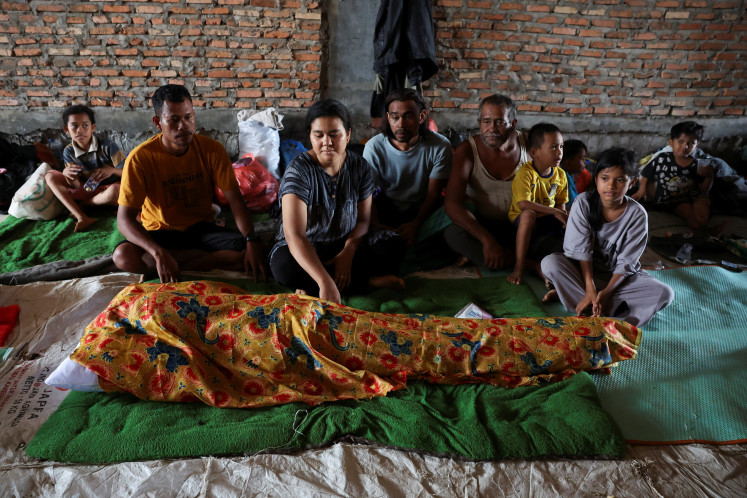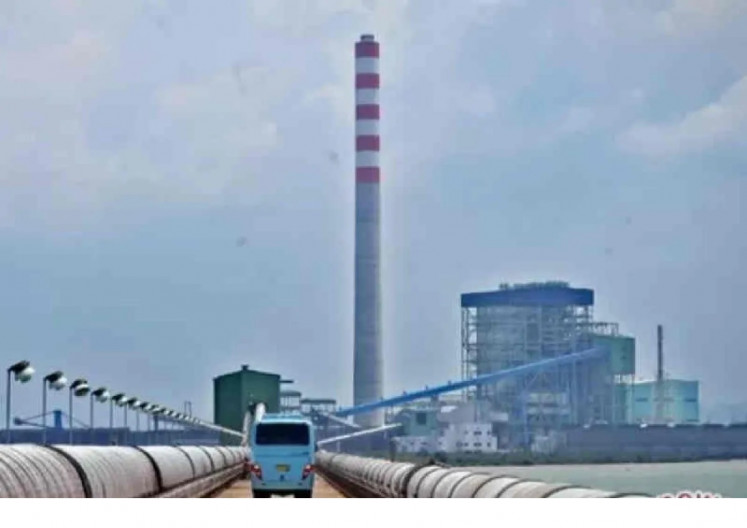Popular Reads
Top Results
Can't find what you're looking for?
View all search resultsPopular Reads
Top Results
Can't find what you're looking for?
View all search resultsRich spend less, poor spend more amid difficult economy
Recent data suggesting an improvement to equality in the country has not impressed economists who believe that it merely reflects restrained consumption among the wealthy and rising living costs for the poor, rather than welfare improvement
Change text size
Gift Premium Articles
to Anyone
Recent data suggesting an improvement to equality in the country has not impressed economists who believe that it merely reflects restrained consumption among the wealthy and rising living costs for the poor, rather than welfare improvement.
The Central Statistics Agency (BPS) reported the narrowing spending gap on Monday based on the latest Gini ratio data, which fell to 0.40 in September 2015 from a position of 0.41 in March 2015. It was the first decline on a national level since September 2011.
A Gini ratio of 0 represents perfect equality, while an index of 1 implies perfect inequality. The ratio measures the extent to which the distribution of income — or in some cases, consumption expenditure — among individuals or households within an economy deviates from a perfectly equal distribution.
Twenty percent of the population with the highest spending posted a drop in expenditure between April and September. Their share of total spending was down to 47.84 percent from 48.25 percent, as shown by BPS data.
“They’re the ones with the option to cut back on spending, which subsequently affected our domestic consumption in the second and third quarters,” said Maybank Indonesia chief economist Juniman.
Domestic consumption, which accounts for more than half of the country’s economy, dropped to a level of 4.9 percent year-on-year (yoy) in the second and third quarters, respectively, from 5.01 percent yoy in the first, putting pressure on overall growth.
Indonesia’s gross domestic product (GDP) grew 4.67 percent in the second quarter, inching up 4.73
percent in the third quarter, maintaining its six year low. Considerable layoffs were also reported up to the month of September last year, amounting to nearly 75,000 workers across different business sectors, according to various sources compiled by Bahana Securities.
As the economy decelerated during the period, the affluent members of the population elected to save on their secondary and tertiary spending, Juniman added.
Samuel Asset Management chief economist Lana Soelistianingsih also attributed the upper class spending cut to exchange rate volatility, saying that the wealthy were more sensitive to any weakening of the rupiah.
The rupiah sank by an average 12.5 percent to Rp 14,693 per US dollar in September from Rp 13,065 in March, according to data from Bloomberg.
On the other hand, those with the lowest spending capabilities, equivalent to 40 percent of the population, saw their expenses soar, with its share of overall spending climbing to 17.45 percent from 17.10 percent.
However, this rise in spending did not result from the poor having obtained higher income, but was due to the soaring consumer prices linked to basic needs, as reflected by inflation statistics.
Inflation rose significantly to 6.8 percent on an annual basis in September, with foodstuff increasing 8.3 percent yoy.
“They could not simply afford to spend, they were having to purchase essential goods and this oft meant withdrawing their savings,” said Bank Central Asia (BCA) chief economist David Sumual.
He said that Bank Indonesia’s reports on broad money corroborated the assumption as savings growth was squeezed between April and September last year. The economists said that it would not be easy to lower the Gini ratio to 0.39, as targeted in this year’s state budget.
Juniman proposed that the government should further develop Jakarta and other regions that recorded the widest inequality, namely Yogyakarta, in Central Java, as well as West Java and West Papua.
The World Bank, on the other hand, wrote in its Indonesia’s Rising Divide report that infrastructure improvement and significant reforms in fiscal policy were among the strategies that Indonesia could implement to reduce the gap.
-------------------
To receive comprehensive and earlier access to The Jakarta Post print edition, please subscribe to our epaper through iOS' iTunes, Android's Google Play, Blackberry World or Microsoft's Windows Store. Subscription includes free daily editions of The Nation, The Star Malaysia, the Philippine Daily Inquirer and Asia News.
For print subscription, please contact our call center at (+6221) 5360014 or subscription@thejakartapost.com










